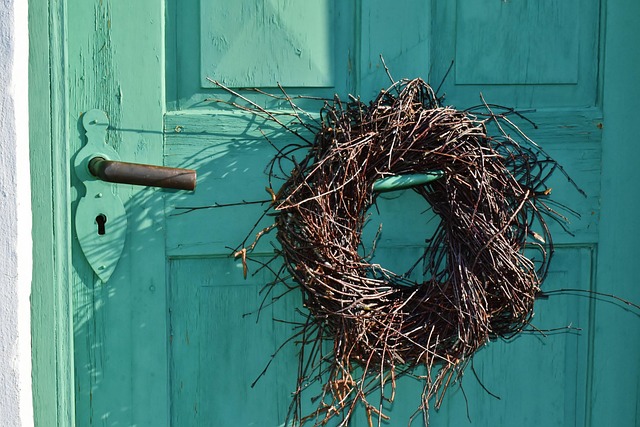Noise-reducing doors, featuring advanced sealing mechanisms, offer tranquility in noisy settings by blocking sound transmission. They enhance comfort, productivity, and privacy, while also improving energy efficiency. Weatherstripping, crucial for effective door sealing, blocks air and sound leaks. Various sealing options target specific problem areas, with proper installation ensuring optimal performance. Regular maintenance, including inspection, cleaning, and lubrication, is vital to preserve the effectiveness and longevity of these doors.
“Enhance your indoor comfort and privacy with an often-overlooked solution—weatherstripping and door seals. This article explores the power of noise-reducing doors and their ability to eliminate unwanted gaps, preventing sound leakage between rooms. We delve into the science behind weatherstripping, guiding you through various seal types and installation tips for optimal results. Discover how regular maintenance ensures the longevity of these seals, contributing to a quieter, more serene environment.”
Understanding Noise-Reducing Doors and Their Benefits
Noise-reducing doors are designed with a special focus on minimizing sound transmission, making them an excellent solution for homes and offices in noisy environments. These doors incorporate advanced sealing technologies, such as weatherstripping and seals, to eliminate gaps that can allow sound to escape or enter. By effectively blocking out noise, they create quieter indoor spaces, enhancing comfort and productivity.
The benefits of noise-reducing doors extend beyond simply better acoustics. They contribute to improved energy efficiency by preventing air leakage, which can lead to significant savings on heating and cooling costs. Additionally, these doors offer enhanced privacy, making them ideal for areas where minimizing external noise is crucial, such as home offices or studios.
The Role of Weatherstripping in Door Sealage
Weatherstripping plays a pivotal role in achieving an effective door seal, which is essential for maintaining comfort and privacy within a space. By installing high-quality weatherstrips, specifically designed to fit the contour of doors, significant gaps can be eliminated, preventing air and sound from escaping or entering. This simple yet powerful technique is a cornerstone in creating noise-reducing doors, offering a solution for both residential and commercial settings.
Effective door sealing with weatherstripping serves as a barrier against external noises, ensuring interior spaces remain calm and peaceful. The process involves inserting flexible strips along the door’s perimeter, which compress upon closure, forming a tight seal. This simple adjustment can significantly reduce sound transmission, making it ideal for individuals seeking quieter environments or those aiming to minimize noise transfer between rooms.
Types of Seals and Gaps to Address
When it comes to weatherstripping and seals for doors, several types are available to address various gaps and sound leakage issues. Firstly, consider rubber door seals that are commonly used on exterior doors. These versatile seals can fill spaces between the door and frame, effectively blocking drafts and noise. They come in different forms, such as door sweeps at the bottom and weatherstrips along the sides, ensuring a tight seal.
Additionally, for more intricate applications, there are specialized seals designed to fit around door handles or specific cracks. These can include foam or rubber strips with adhesive backing, providing insulation and noise reduction. Gaps around handles or window panels in patio doors are common problem areas that these tailored seals can rectify, enhancing the overall noise-reducing qualities of your doors.
Installation Tips for Optimal Performance
When installing weatherstripping and seals around your noise-reducing doors, ensure a tight fit for optimal performance. Start by preparing the door frame and surface, ensuring they’re clean and free from debris. Use a utility knife to cut the weatherstripping to the appropriate length, allowing for a small overlap at each joint. Apply a bead of adhesive along the door’s edge, pressing the weatherstripping firmly into place. For added sealing power, consider using a silicone-based adhesive designed for outdoor use, as it offers better resistance to extreme temperatures and weather conditions.
Next, measure and cut foam or rubber seals to fit gaps around the door. Insert these seals gently but securely into the frame, creating an airtight barrier. Double-check all connections and make adjustments as needed. Remember, a well-installed noise-reducing door system not only prevents sound leakage but also enhances energy efficiency by keeping outdoor elements out.
Maintenance and Longevity of Door Seals
Regular maintenance is key to ensuring door seals remain effective and prolong their lifespan, especially in harsh weather conditions. Over time, seals can become damaged or deform due to extreme temperatures, sunlight exposure, and regular use. A simple yet effective strategy is to periodically check for any tears, cracks, or signs of wear and replace them promptly. Using a suitable lubricant can also help maintain flexibility and ensure smooth operation of the seal.
Additionally, keeping the area around the door clean and free from debris will prevent foreign objects from trapping between the seal and the door frame, reducing friction and potential damage. Regular cleaning and inspection allow for early identification of issues, ensuring that minor problems don’t turn into major noise-reducing door failures.
Noise-reducing doors, equipped with effective weatherstripping and seals, offer a significant upgrade in home comfort and privacy. By eliminating gaps and sound leakage, these doors create a calmer, more peaceful indoor environment. Understanding the importance of proper weatherstripping and choosing the right seal types is key to reaping the benefits of noise-reducing doors. Regular maintenance ensures their longevity, making them a practical investment for any homeowner seeking improved interior tranquility.
